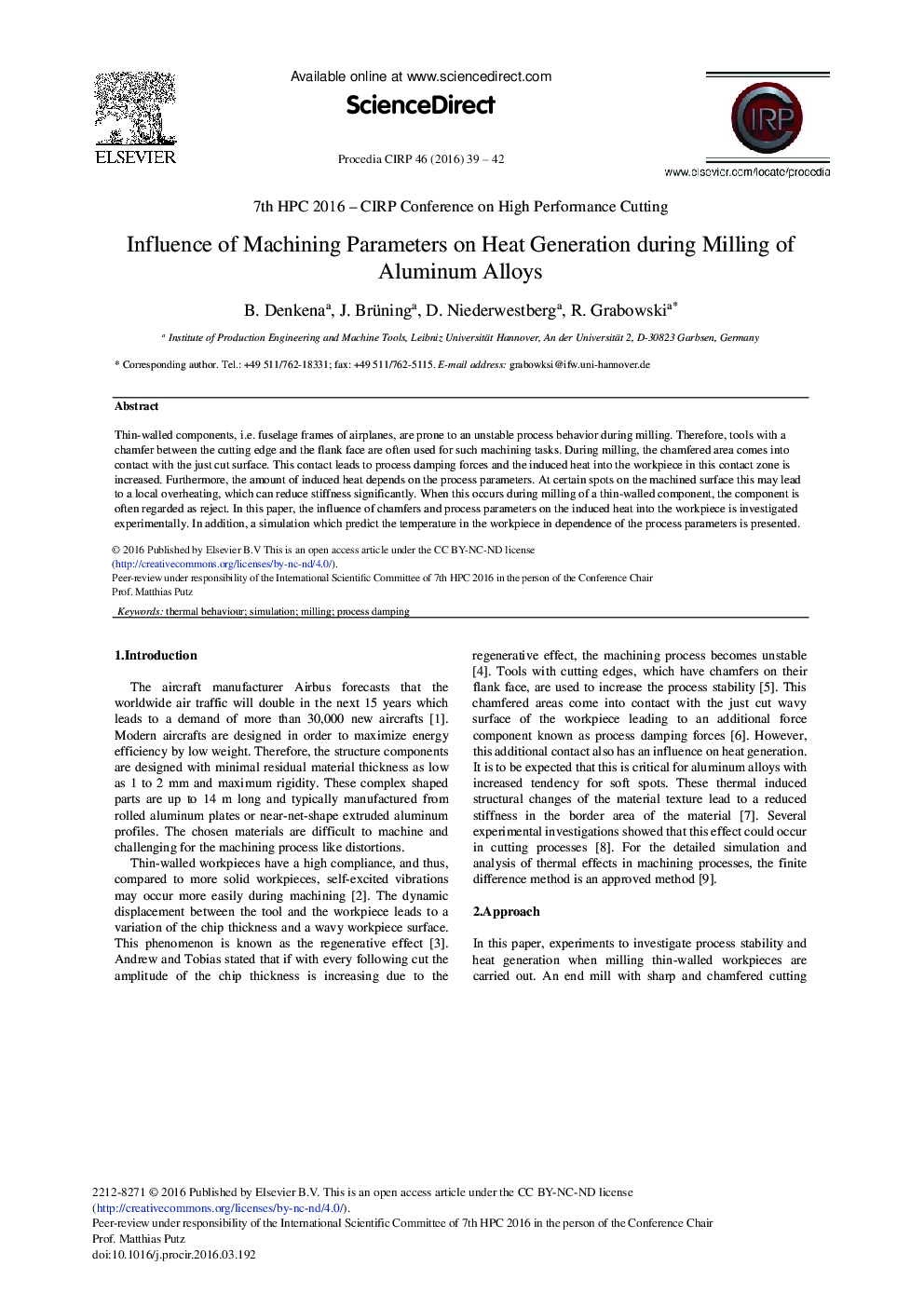| Article ID | Journal | Published Year | Pages | File Type |
|---|---|---|---|---|
| 1698368 | Procedia CIRP | 2016 | 4 Pages |
Thin-walled components, i.e. fuselage frames of airplanes, are prone to an unstable process behavior during milling. Therefore, tools with a chamfer between the cutting edge and the flank face are often used for such machining tasks. During milling, the chamfered area comes into contact with the just cut surface. This contact leads to process damping forces and the induced heat into the workpiece in this contact zone is increased. Furthermore, the amount of induced heat depends on the process parameters. At certain spots on the machined surface this may lead to a local overheating, which can reduce stiffness significantly. When this occurs during milling of a thin-walled component, the component is often regarded as reject. In this paper, the influence of chamfers and process parameters on the induced heat into the workpiece is investigated experimentally. In addition, a simulation which predict the temperature in the workpiece in dependence of the process parameters is presented.
